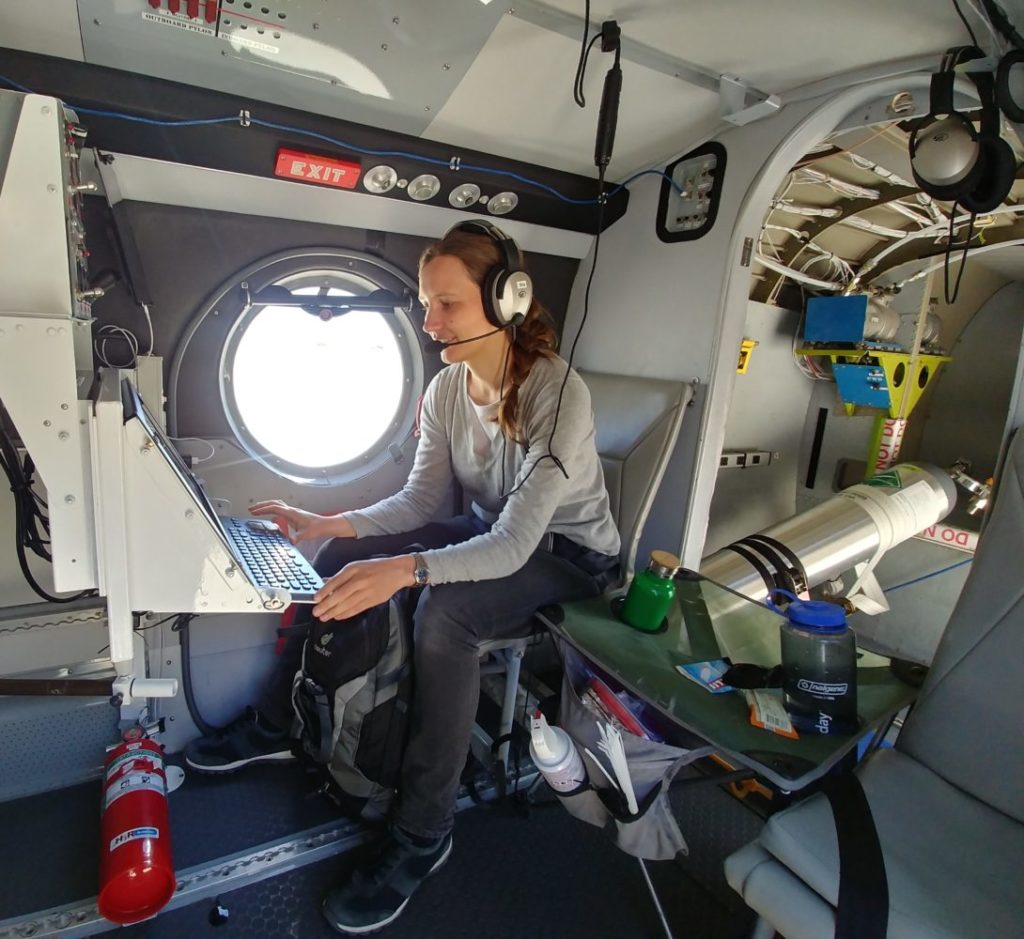
Editor’s Note: Eva Pfannerstill is a winner of The Story Exchange’s 2022 Women In Science Incentive Prize.
Air pollution is a public health crisis that impacts almost every single human on the planet. Yet, it is still a relatively understudied — and woefully unaddressed — problem.
“It’s an issue that confronts all of us,” says Eva Pfannerstill, a German-born atmospheric chemist at the University of California, Berkeley, who is hoping to improve public health policies with a new method of monitoring air pollution that involves getting on top of the problem (literally) in the U.S. city with the worst air quality in the country: Los Angeles.
Traditionally, air pollution emissions data is collected — perhaps unreliably — via self-reported industry studies or by clunky, expensive, inconvenient high-tech instruments. Pfannerstill’s team was convinced there must be a better method, so instead of placing these instruments on street corners, they decided to fly them over the city.
And so, in June 2021, with funding from the California Air Resources Board, Pfannerstill took to the skies above L.A. to launch her groundbreaking project. She conducted 16 flights to study emissions from hundreds of gases – something that had never been done before. During the process, air is pulled into the instrument with a pump. The volatile organic compounds are then ionized and transferred into a mass spectrometer, which separates the molecules by mass. From the mass, the scientists identify the chemical composition.
Pfannerstill wanted to focus on L.A. in particular because, during her research, she had observed that levels of air pollution had stagnated in the sprawling metropolis for the past two decades, despite improvements in emission regulations and the introduction of more electric cars.“Why are things not getting better?” Pfannerstill wondered. She was determined to find the answer.
Pfannerstill and her fellow scientists deduced there must be hundreds of different gas emissions sources that were not “being considered by the regulation authorities” and set out to map them. But “we use really expensive instrumentation that of course can’t be put at every street corner to measure pollution,” she explains, which is how “we came up with the idea of using aircraft.”
Their work maps volatile organic compounds, the precursors to air pollution, which accounts for 6 million deaths worldwide annually. The scientists are now using the data collected to map out where the emissions are coming from, what kind of emissions they are, and how much gas is being emitted.
Eventually, when the results are published early next year, Pfannerstill hopes the datasets can be used by activist groups, community organizers, local councils and policymakers to understand which emission sources are the most damaging to human health.
The data points toward the need for more regulation, Pfannerstill says, of volatile chemical products, such as cleaning agents, beauty products and printing inks, that all volatilize to form gases that are harmful to health.
In particular, she is hopeful that the data will be used to relieve the burden on low-income and communities of color, which are disproportionately impacted by air pollution. Multiple studies have shown that people of color are systemically affected by pollution, regardless of income, geography and social status.
More funding needs to be funneled into science supporting environmental justice issues, says Pfannerstill, who is optimistic her science will make a tangible difference to disadvantaged communities. “It can inform people about what’s going on, it can provide [activists] with data so they can prove to institutions what’s happening – and it’s much easier to win a court case with scientific data.”
It’s all part of the big picture, she says. “I’m just a teeny tiny part.” ◼️
(Updated to include a reference to Pfannerstill’s team.)



